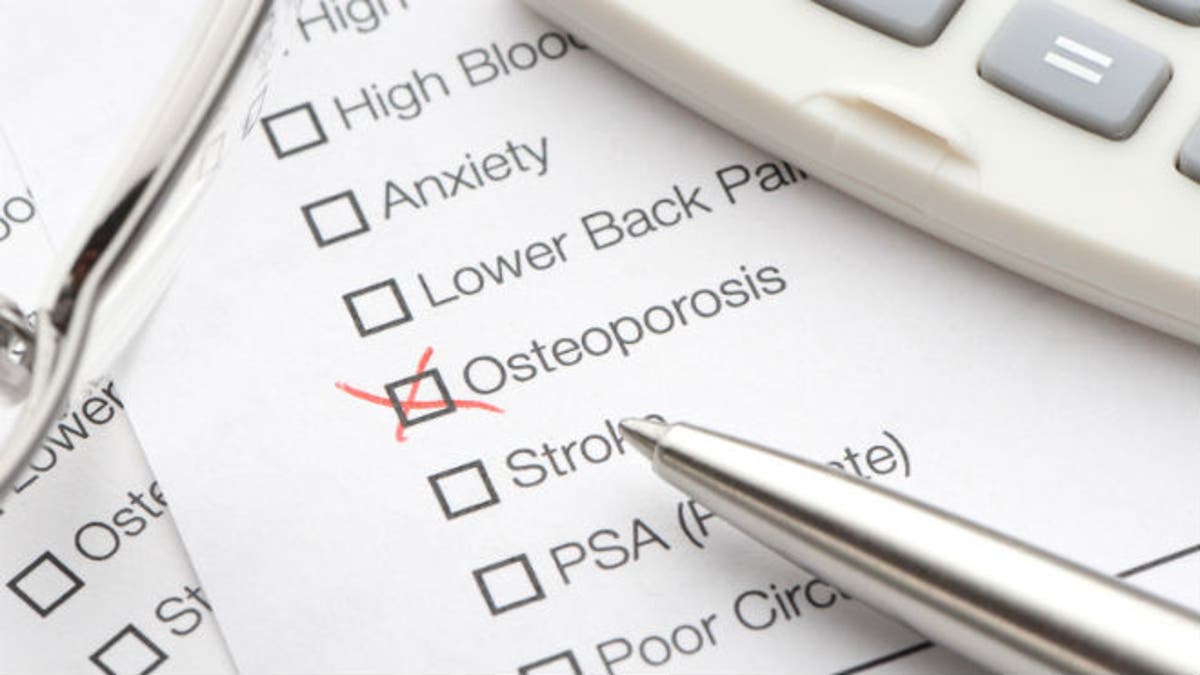
As a doctor, I receive questions every day varying from heart health to infertility. Today, I received a question from a woman who wanted to know how to prevent osteoporosis.
Dear Dr. Manny, I’m getting older, and I read online that osteoporosis is a concern among women my age. What can I do to prevent it?
Thanks,
Kathy
The word “osteoporosis” means porous bone. A porous bone is one that is less dense and, therefore, more fragile and more susceptible to fracture. Some 44 million Americans suffer from osteoporosis, making it a major public health concern.
And it affects men as well as women. One out of every two women and one out of every four men over 50 will have an osteoporosis-related fracture of the hip, vertebrae, or wrist in their lifetime.
Some risk factors associated with the development of osteoporosis you can do nothing about. Gender, for example. Women tend to lose bone mass faster than men, and that has to do with the effects of the female hormones.
Age is another factor we can do nothing about. The older we get, the more prone we are to bone loss.
Body size is yet another factor. People who are small-framed and thin-boned have a greater tendency to develop osteoporosis.
White or Asian women are in the highest risk categories; Hispanics and blacks are at a significantly lower risk. And if osteoporosis runs in your family, especially if your mother had it, then you are at risk for it as well.
There are some risk factors you can do something about, however, with the help of your doctor. These include abnormalities of the menstrual cycle—the absence of your period, known as amenorrhea, low estrogen levels, or premature menopause—that put you at higher risk for osteoporosis.
The same is true for the man who has low levels of testosterone before his forties, or in conjunction with obesity. People with eating disorders, whether anorexia or bulimia, can have metabolic reasons for developing osteoporosis. A lifetime diet low in vitamin D and calcium also puts you at risk. Taking medication like steroids, anticonvulsants, or anticoagulation therapy for a long time can affect your bone density. Cigarette smoking, drinking too much alcohol, and leading a sedentary life all put you at risk for osteoporosis as well.
These risk factors suggest what you can do to help prevent osteoporosis. To begin with, you must incorporate calcium into your diet. There are many sources of calcium, of course, including milk products, leafy greens, broccoli, collard greens, spinach, sardines, and some other types of fish. Most vitamin D is made through the skin from exposure to light, but as people get older vitamin D production decreases significantly; so people in their sixties and seventies should take vitamin D supplements. You also need to do weight-bearing exercises that strengthen your legs and your hips, in order to maintain a healthy vascular flow to the bones.
The symptoms of osteoporosis are silent; those with osteoporosis feel no pain. But some individuals, before they have any fractures, exhibit a loss in stature. If they have bone loss of their spine, of the vertebrae, you may see some bending of their back. This can create loss of height, spinal deformities, and maybe even some back pain.
A doctor diagnoses the disease by doing a physical examination and perhaps a bone mineral density test, which you should have done every two or three years. This test is like an X-ray, and it can detect low bone density before a fracture occurs. It can predict chances of fracturing in the future by telling you how weak or strong the bone is. And it helps determine the rate of loss or monitors the effectiveness of treatment.
The treatment of osteoporosis involves good nutrition, a variety of vitamin and mineral supplements, and exercise. Even if somebody has osteoporosis, exercise is important. The only difference is that the exercises should be specifically designed for people with weak bones. People with osteoporosis should not perform any kind of strenuous, high-impact aerobics.
Now that estrogen replacement therapy has gone out of favor, doctors are prescribing bisphosfinates such as Fosamax and Actonel instead; these medications help increase bone mass and reduce the incidence of spine, hip, and other fractures without the increased risk of breast cancer. The most common side effects of bisphosphonates are stomach upsets, and recent reports seem to link them to osteonecrosis of the jaw, in which the bone does not heal after dental work. So now dentists are very careful not to do major dental work in people who are taking these drugs.
Another type of drug being prescribed for osteoporosis is raloxifene, a selective estrogen-receptor modulator. Raloxifene is also being used for the treatment of breast cancer. Several calcium-related hormones have been tried for the treatment of osteoporosis, too. One is calcitonin, which is a natural-occurring hormone involved in calcium regulation and bone metabolism. Another one is teriparatide, an injectable form of human parathyroid hormone, which regulates calcium metabolism; it also has been approved for postmenopausal women and men.
One of the things to take into consideration with people who have significant osteoporosis is fall prevention to avoid hip and spine fracture. If an individual has osteoporosis and has difficulty moving around, specific changes need to be made in their surroundings. This can involve installing bed guards and railings, as well as minimizing the use of stairs.
Of course, you can use a cane; wear rubber-soled shoes for better traction; walk on grass rather than pavement; be especially careful walking outdoors in winter; and ensure that indoor rooms have no clutter, floors are not slippery, and rugs and carpets have skid-proof backing. In addition, don’t walk with socks, stockings, or slippers, and make sure you use a rubber mat in the shower tub.
